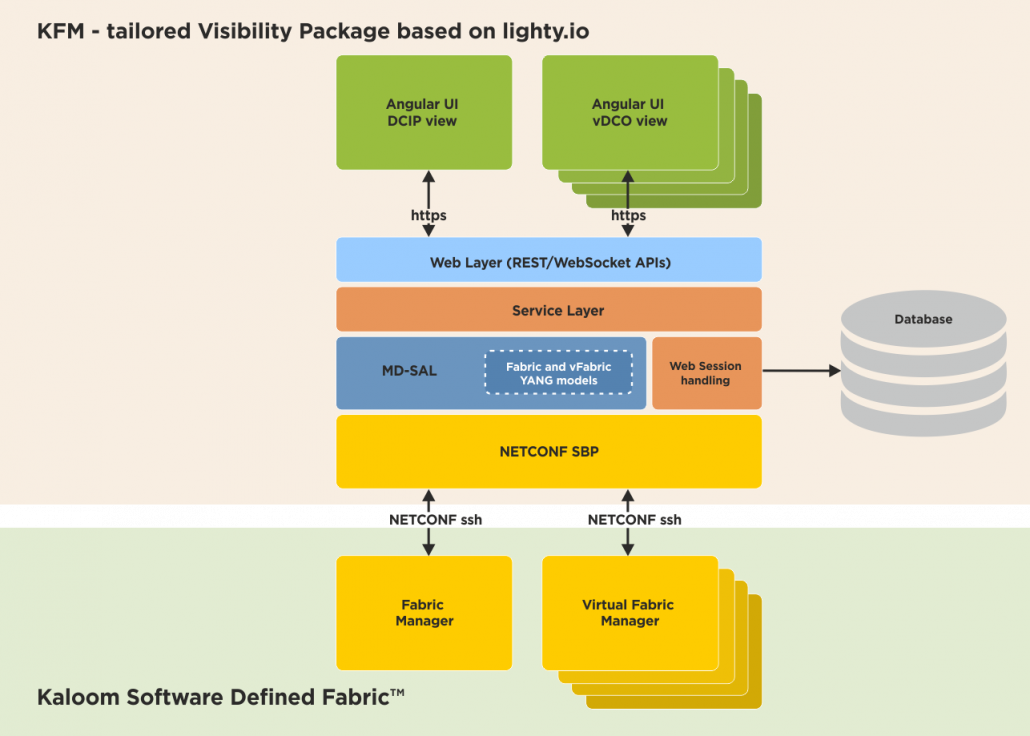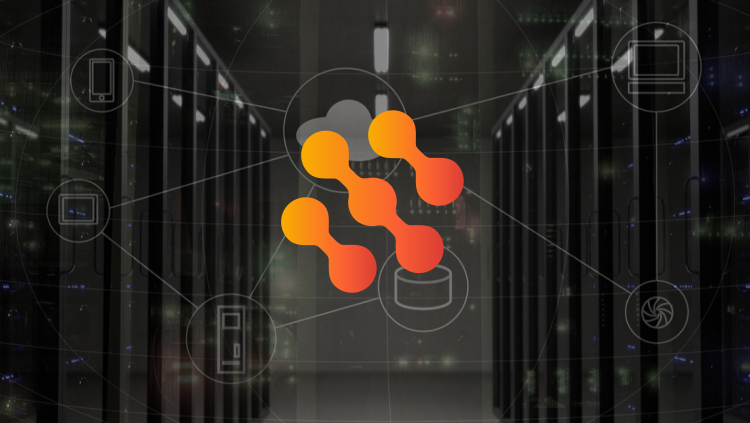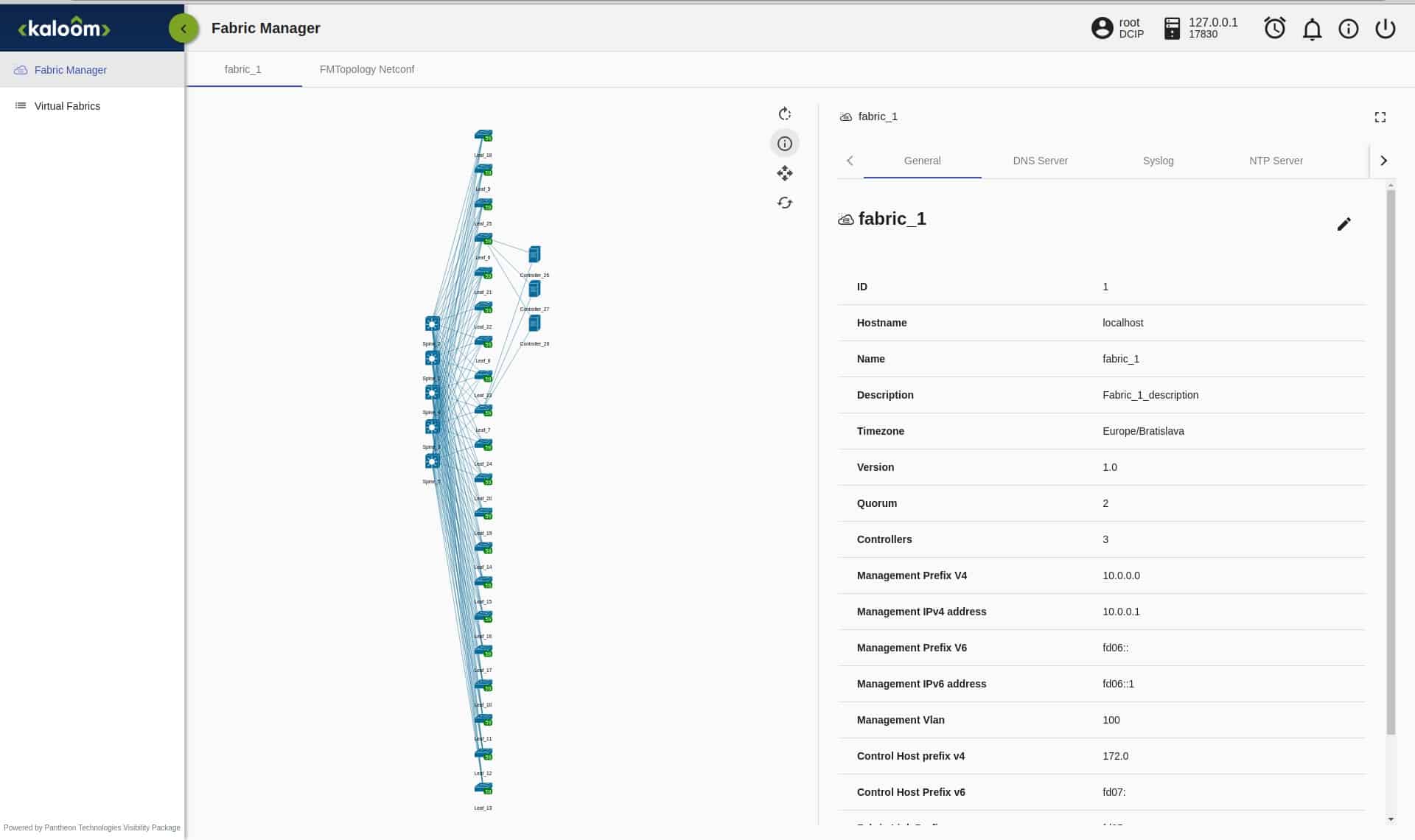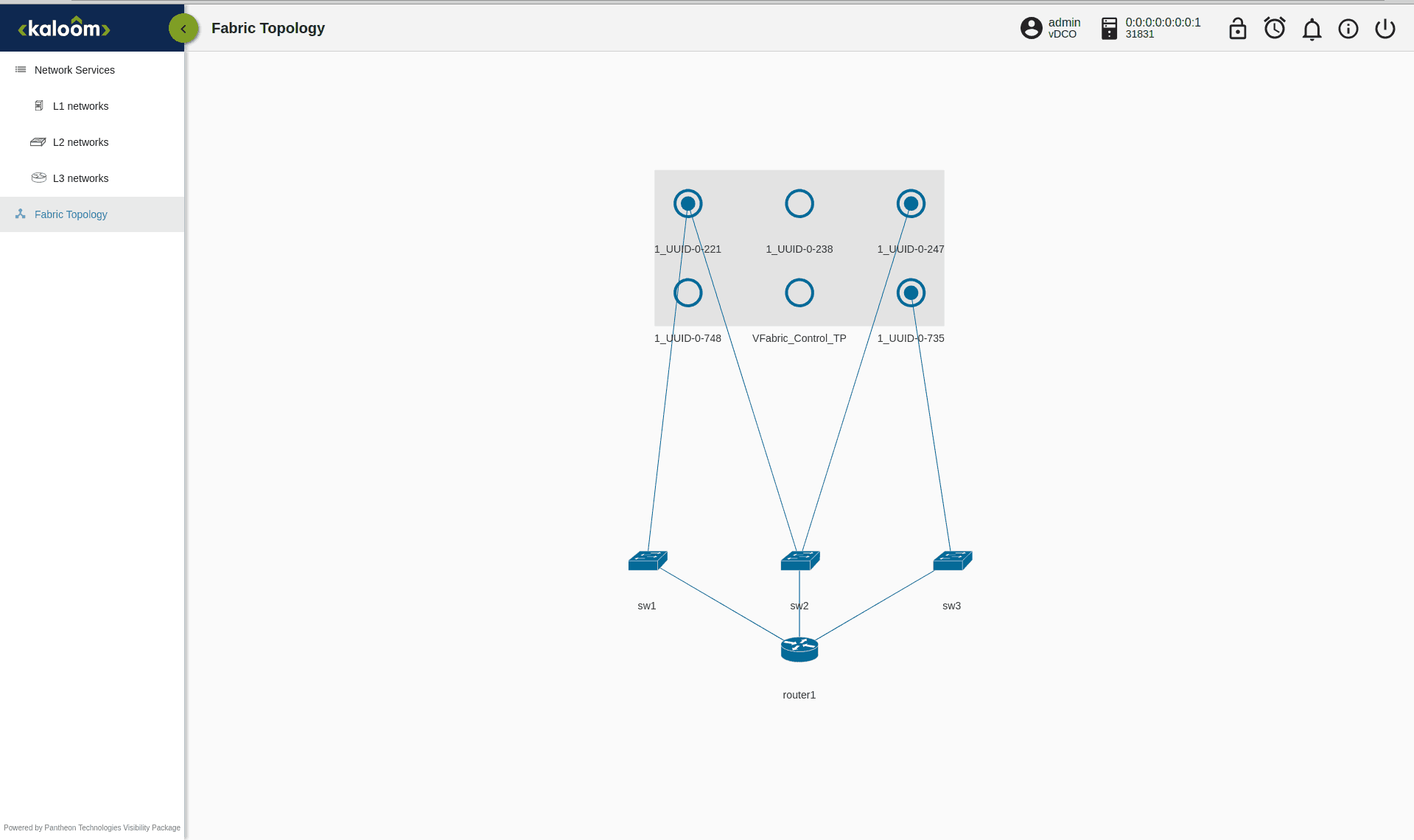lighty.io powers datacenter management at kaloom.com
Complete automation and full forwarding plane programmability
Private data centers are a hot topic for companies and enterprises that are not willing to push all the data into public clouds. Kaloom Software Defined Fabric™ (Kaloom SDF) is the world’s first fully programmable, automated, software-based data center fabric capable of running VNFs efficiently at scale. This is the first data center networking fabric on the market that provides complete automation and full forwarding plane programmability.
Kaloom approached PANTHEON.tech last year, knowing Pantheon’s intensive and long involvement in SDN, particularly in OpenDaylight project. OpenDaylight (ODL) is a modular open platform for orchestrating and automating networks of any size and scale. The OpenDaylight platform arose out of the SDN movement, in which PANTHEON.tech has expertise and experience. Hence, it was a logical step to utilize this expertise in this project and leverage what has already been done.
Traditional ODL based controller design was not suitable for this job because of the bulkiness of the Karaf based deployments. Kaloom requested a modern web UI, that the vanilla ODL platform does not provide. lighty.io as a component library provides an opportunity to run ODL services such as MD-SAL, NETCONF and YANG Tools in any modern web server stack, and integration with other components like MongoDB.
Architecture
The following architecture is starting to be like a blueprint for SDN applications today. We utilize the best of both worlds:
- MD-SAL, NETCONF and YANG Tools from ODL
- Updated modern web stack Jetty/Jersey and
- MongoDB as a persistent data store.

This is how Kaloom Fabric Manager (KFM) project has started. After several months of customizing development, we have deployed a tailored web application that provides management UI for Kaloom SDF. We have changed and tailored our Visibility Package application to suit Kaloom’s requirements and specifics. This specialized version uses the name of KFM. The architecture diagram above shows details/internals of the KFM and how we interconnect with Kaloom’s proprietary Fabric Manager/Virtual Fabric Manager controller devices.
The solution for physical data centers
lighty.io based back-end of the KFM with NETCONF plugin provides REST services to the Angular UI, which is using our Network Topology Visualization Component for the better topology view visualization and user experience. Using these REST endpoints, it is easy to send specific NETCONF RPC to the Kaloom SDF controllers.
While working on this next-gen Data Center Infrastructure Management software, we have realized that integrating all moving parts of the system is a crucial step for final delivery. Since different teams were working on different parts, it was crucial we could isolate the lighty.io part of the system and adapt it to the Kaloom SDF as much as possible. We have used our field-tested NETCONF device simulator from our lighty.io package to deliver the software which was tested thoroughly to provide stability of the KFM UI.
Kaloom SDF provides a solution for physical data centers administrated by Data Center Infrastructure Provider (DCIP) users. A physical data center can be easily sliced to virtual data centers offered to customers, called virtual Data Center Operator (vDCO) users. The DCIP user can monitor and configure the physical fabrics – PODs of the data center. KFM WEB UI shows the fabrics in topology view and allows updating the attributes of fabric and fabric nodes.
Advantages for DCIP
The main task of DCIP users is to slice the fabrics to virtual data centers and virtual fabrics. This process involves choosing servers through associated termination points and associating them with the newly created virtual fabric manager controller. Server resources are used through the virtual fabric manager by vDCO users.
vDCO users can use the server resources and connect them via network management of their virtual data center. vDCO can attach server ports to the switches with proper encapsulation settings. After the switch is ready, vDCO can create a router and attach switches to it. The router offers different configuration possibilities to follow vDCO user’s needs: L3 interface configuration, static routing, BGP routing, VXLANs, and many more. KFM offers also topology view of the virtual data center network, so you can check relations between servers, switches, and routers.
For more details about the KFM UI in action, please see the demo video with NETCONF simulator of Kaloom SDF bellow, or visit Kaloom or Kaloom Academy





